Truly grateful for the Government’s actions to keep Australians secure and healthy
April 29, 2020“The next city we shall inhabit is still in our saddlebags”.
The final verse of David Malouf’s poem, Between Towns, is strikingly apt for this time.
 With Malouf, we journey tentatively through this precarious time, while we continue to wonder what “the next city” will be like. The crossroads of Coronavirus confront us with many choices, inevitably both rich and bleak, and we keep asking how our actions – now and in the next moment of the “darkness between towns” – will help to determine the kind of community and world we will become.
With Malouf, we journey tentatively through this precarious time, while we continue to wonder what “the next city” will be like. The crossroads of Coronavirus confront us with many choices, inevitably both rich and bleak, and we keep asking how our actions – now and in the next moment of the “darkness between towns” – will help to determine the kind of community and world we will become.
We are truly grateful for the Government’s actions to keep Australians secure and healthy during these terrible days. There is no doubt that the JobKeeper and Jobseeker schemes, designed to support the Australian community, are enormously valuable initiatives, which will make a difference to millions of Australians.
Simultaneously, however, as we are caught up in the news bulletins and unprecedented stories of sickness and death, we are confronted also by the plight of those trapped and seemingly abandoned at the edges of our community.
 Right across Australia, we have seen Church and community leaders, justice advocates and many individuals expressing concern for the more than 1.5 million members in our community who find themselves missing out on Government support at this time. Casual workers, asylum seekers, refugees, migrant workers, international students, and homeless people have been totally disregarded in the Government’s support packages. As a consequence, they find themselves facing unprecedented crises.
Right across Australia, we have seen Church and community leaders, justice advocates and many individuals expressing concern for the more than 1.5 million members in our community who find themselves missing out on Government support at this time. Casual workers, asylum seekers, refugees, migrant workers, international students, and homeless people have been totally disregarded in the Government’s support packages. As a consequence, they find themselves facing unprecedented crises.
The Prime Minister has stated unequivocally that this is “no longer about entitlement. It’s about needs.” It seems, very sadly, that the above groups have been excluded from this belief and description.
In urging the Government to show compassion, Catholic Church leaders have described community members accurately and poignantly:
As we journey towards the “next city”, it’s our hope that the Government will extend assistance to those excluded at this time, and that the lessons of this time will lead us to become a more compassionate, more caring society. We continue to hold all these disregarded members of our communities in our prayer, our action and our advocacy. “We set forth together into unknown country,” continuing to journey hopefully “in the darkness between towns – while shadows pause and change a wheel.”
Jan Barnett rsj
Photo: Not today COVID-19 by cottonbro from Pexels. Used with permission.
Photo: Students holding each others hands by Fauxels obtained from Pexels. Used with permission.
ANZAC Day 2020
April 25, 2020ANZAC Day is a significant day for all Australians and is often a time for private reflection.
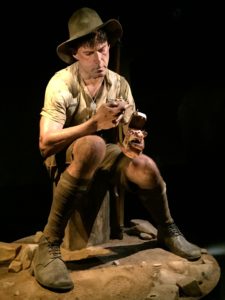 Due to the global outbreak of COVID-19 (Coronavirus), the Australian Government has cancelled overseas ANZAC Day ceremonies for 2020 on the Gallipoli peninsula in Turkey, near Villers-Bretonneux in France, including the Australian service at the ‘Digger’ Memorial, Bullecourt, Hellfire Pass in Thailand, Sandakan in Malaysia and Isurava in Papua New Guinea.
Due to the global outbreak of COVID-19 (Coronavirus), the Australian Government has cancelled overseas ANZAC Day ceremonies for 2020 on the Gallipoli peninsula in Turkey, near Villers-Bretonneux in France, including the Australian service at the ‘Digger’ Memorial, Bullecourt, Hellfire Pass in Thailand, Sandakan in Malaysia and Isurava in Papua New Guinea.
Australians are encouraged to privately commemorate Anzac Day, in-line with the latest health advice, and to watch the service at the Australian War Memorial. While the Service is not open to public attendance, the Service will be nationally broadcast, to enable the public to watch from their own homes. There will also be a range of other commemorative activities that will be broadcast throughout the day. The Department of Veterans’ Affairs is working with state and territory governments as they finalise their ANZAC Day plans and will update this page when these details are confirmed.
We hope you enjoy reading this ANZAC Day article by Mike Gourley published in Tui Motu InterIslands Magazine this month:
Photos: Obtained from the Editor at Tui Motu InterIslands Magazine. Used with permission.
Foundation Day Whanganui, Aotearoa New Zealand
April 24, 2020Celebrating the 140th anniversary of Aotearoa New Zealand Foundation in Whanganui: 24 April 1880
At the time of the 1980 Centennial celebrations marking the arrival of the Sisters of Saint Joseph in Whanganui, Aotearoa New Zealand, Mary Gullery penned the poem below to mark the occasion.
A past pupil of the Sisters of Saint Joseph and Sister Genevieve Greig’s sibling, Mary was a recognized writer and poet. In the Ballad of the Wakatu, she captures the founding spirit that was evident in those first four sisters who spoke of coming “gaily down from Bathurst to Sydney” to begin their journey into the unknown. She also captures the energy and anticipation with which the people of Whanganui awaited the arrival of the sisters.
With the passing of a further forty years, that energetic spirit captured by Mary still moves us to face a changing future.
The Ballad of the Wakatu by Mary Gullery
In your children’s houses light a candle flame.
Tell your children’s children how the first Sisters came.
How all the bells were ringing, the people still abed,
“Dear God! What can have happened?” the Irish mothers said.
A messenger comes running, glad the news he tells,
News like wildfire spreading, with peal on peal of bells.
“Rise up from your sleeping, sound the pipe and drum!
The ‘Wakatu’ is berthing! The Nuns, the Nuns have come!”
Mr Lloyd, the Band, Father Kirk, the Mayor,
It was hard to understand how fast they all got there.
Through the streets of Wanganui in the early morning sun,
Speedily assembled, a welcome was begun.
For the coaster had travelled sooner than expected,
And though the school committee was most hastily collected,
That night they held their concert, and it became their pride
That the hall was overflowing and a hundred stood outside.
The parents in the fledgling town had longed for such a day,
And begged this boon as often as they knelt down to pray.
The refinements that the Nuns could bring, the culture there would be,
And religion to be handed down to all posterity.
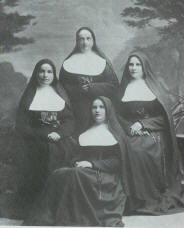
From far away Australia came the answering of their prayer,
With Sisters Hyacinth, Joseph, Teresa and Clare.
Those first sisters are sleeping now, their work was truly done.
And others carry on the task so well begun.
Their mark is on New Zealand right from shore to shore.
A hundred years have passed away. The bells ring out once more!
All the bells are ringing for a Jubilee,
For giving thanks and begging grace on years as yet to be.
When heritage is vaunted and histories prevail,
Gather in the children close and tell again the tale,
How the coaster brought to harbour in those early years
A blessing on the sacrifice of Catholic pioneers.
John Bosco Kendall rsj
International Earth Day 2020
April 22, 202022 April is International Earth Day and this year will mark the 50th Anniversary.
 The theme for Earth Day 2020 is climate action. The enormous challenge, but also the vast opportunities, of action on climate change have distinguished the issue as the most pressing topic for the 50th anniversary.
The theme for Earth Day 2020 is climate action. The enormous challenge, but also the vast opportunities, of action on climate change have distinguished the issue as the most pressing topic for the 50th anniversary.
Climate change represents the biggest challenge to the future of humanity and the life-support systems that make our world habitable.
To learn more about International Earth Day, please visit their official website.
Annual Paws4Kids Campaign
April 20, 2020The Mary MacKillop Family Services second Annual Paws4Kids Campaign is scheduled to take place on Wednesday 22 April 2020.
 Mary MacKillop Family Services believe every child deserves the best and the best place for children is in a safe and supportive family, where they are nurtured to develop to their full potential. Their existence began on 1 July 1997, however their history extends back more than 150 years when the Sisters of Mercy, Christian Brothers and Sisters of Saint Joseph began their work in Australia, establishing homes for children who were orphaned, destitute or neglected, and for families in need of care and support.
Mary MacKillop Family Services believe every child deserves the best and the best place for children is in a safe and supportive family, where they are nurtured to develop to their full potential. Their existence began on 1 July 1997, however their history extends back more than 150 years when the Sisters of Mercy, Christian Brothers and Sisters of Saint Joseph began their work in Australia, establishing homes for children who were orphaned, destitute or neglected, and for families in need of care and support.
The annual Paws4Kids campaign is seeking to raise $300,000 to support the continued growth of the Paw Pals program, which has been having a tremendous impact in supporting young people in our residential care program and the broader community to stay engaged in education.
The Community Engagement team has been working very hard to ensure the campaign is a success despite the COVID-19 pandemic, and has demonstrated great creativity in responding to this unexpected challenge, including:
- revising their social media strategy to tap into the trend for people to rely on their dogs for company during isolation, by introducing the hashtag #dogsmakemefeel into their messaging;
- working with ambassador Lara Shannon – a Channel Ten presenter – to negotiate a heavily discounted package of TVCs from the Ten Network securing almost 100 ads which will be seen by an estimated 1.1 Million viewers; and
- Creating an activity pack for families at home with their children during this time of social isolation (see below).
![]()
How you can help
There are three simple ways you can help and it would be terrific if you could help us to achieve our fundraising goal by one or more of the following ways:
- Making a donation: by visiting paws4kids.org.au. Your donation will be multiplied 3x thanks to our generous matchers;
- Sharing the campaign with your networks and on social media: Our Social Media toolkit to help you draft your posts (see below);
- Entering our Dogs of MacKillop competition: by either posting a photo of your dog to social media including the hashtags #DogsMakeMeFeel and #paws4kids, or by sending a photo to contributions@mackillop.org.au.
Thank you so much for your support of this important initiative and we would be most grateful if you could please spread the word.
Best wishes,
Dr Robyn Miller
Chief Executive Officer
Mary MacKillop Family Services
Flora MacDonald arrived in Melbourne 1840
April 17, 2020The Arrival of Flora MacDonald in Melbourne, Victoria.
 When Catherine MacDonald boarded the Government emigrant ship Glen Huntley she signed on as a widow with three adult children: Alexander, aged twenty-seven, Flora, aged twenty-three and Donald aged eighteen. Her husband, Donald ‘Drochaid’ MacDonald, boarded separately. He had been guarantor for his cousin ‘Long John’ MacDonald who was then deep in debt. Donald hoped to escape the Fort William bankers, but he was spotted on board, arrested and returned to shore. Bound for Melbourne, Australia, the ship left Greenock, Scotland, on 14 December 1839 and four months later on 20 April 1840, sailed into Port Phillip Bay. The passengers were unable to disembark because the ship was flying the yellow fever flag, a signal to those waiting on shore that the passengers must be quarantined.
When Catherine MacDonald boarded the Government emigrant ship Glen Huntley she signed on as a widow with three adult children: Alexander, aged twenty-seven, Flora, aged twenty-three and Donald aged eighteen. Her husband, Donald ‘Drochaid’ MacDonald, boarded separately. He had been guarantor for his cousin ‘Long John’ MacDonald who was then deep in debt. Donald hoped to escape the Fort William bankers, but he was spotted on board, arrested and returned to shore. Bound for Melbourne, Australia, the ship left Greenock, Scotland, on 14 December 1839 and four months later on 20 April 1840, sailed into Port Phillip Bay. The passengers were unable to disembark because the ship was flying the yellow fever flag, a signal to those waiting on shore that the passengers must be quarantined.
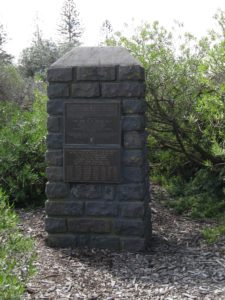
As there was, as yet, no quarantine station in Melbourne, one was hastily erected at a place now called Point Ormond. Two camps were set up, one for the healthy and the other for those still suffering or dying from the fever and they were to be strictly segregated. On 24 April 1840, the passengers’ first footsteps on the soil of their new homeland took them to these temporary dwellings and there they would remain until it was safe to be released into the community.
Assigned to the tents for the healthy were Catherine MacDonald, Flora and Donald. Sadly for the three, a few weeks before their arrival in Melbourne, Alexander ‘Sandy’ had perished from the fever and fallen overboard in delirium. He had been their mainstay and encourager as he constantly reminded them that God would take care of them. Flora’s first introduction to her adopted country was, therefore, a sad and anxious one. She knew that many of her Scottish kinfolk would welcome the little family once they were released from quarantine but what would the future hold for her in this young pioneer colony? When would her beloved father be able to join them? The three MacDonalds pondered these questions as they waited for the ‘all clear’ which heralded their release about 18 June. To their relief, the family of John MacKillop was there to take care of them. It was to the home of Alexander MacKillop, in Collins Street that they were taken. Alexander, following the regulations of the day, guaranteed them employment: Catherine as housekeeper, Flora as housemaid and Donald as a farm labourer.
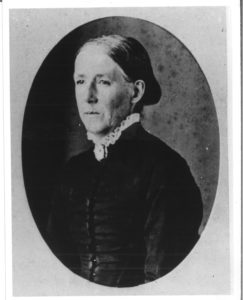 It was not long before love blossomed and Flora and Alexander were married on 14 July 1840 in the little wooden chapel near the site of the present St Francis Church. It was a happy day as they were surrounded by family and many relations. The one cloud for Flora was the absence of her father. In fact he was not to re-join the family until about April 1842.
It was not long before love blossomed and Flora and Alexander were married on 14 July 1840 in the little wooden chapel near the site of the present St Francis Church. It was a happy day as they were surrounded by family and many relations. The one cloud for Flora was the absence of her father. In fact he was not to re-join the family until about April 1842.
Flora’s arrival in Melbourne after the traumatic voyage from Scotland and the dismal time of quarantine receded in her memory on her wedding day as she looked forward to a bright future. She could not foresee the life that lay ahead: a life of many trials and hardships through which she was sustained by her trust in God and God’s providence. Neither could she foresee that her first-born child, Mary, would one day be acclaimed as Saint Mary of the Cross, Australia’s first canonised saint.
Bernadette O’Sullivan rsj
Laudato Si’ Webinar: Part One
April 16, 2020In May 2015 Pope Francis launched his encyclical with the subtitle “On Care for our Common Home” and the title “Laudato Si’” which are the opening words for a hymn composed by St Francis of Assisi in the 1200s.
For our time, this document is both relevant and important, since it highlights the priority that respect for the environment should have in Catholic life, and integrates the notion with what is central to our understanding of humanity’s relationship with God.
2020 Easter Greetings from Sr Monica Cavanagh
April 12, 2020We are an Easter People.
Happy Easter to everyone. What a different Easter Triduum experience it has been as we have walked through the journey with Jesus to Holy Thursday, Good Friday and Easter Sunday. So many of the symbols of this time have taken on new meaning in the light of the Coronavirus COVID-10 pandemic.
On Holy Thursday we have recalled the washing of the feet and the call to service. Keeping our hands washed has been a constant call of these past weeks and I imagined our health care workers washing the feet of those critical patients in their care. We have seen their work of service lauded across our world reminding us as Christians of our own call to be of service to one another. Buying food, as the disciples were invited to do by Jesus for the Passover Meal, has been one reason, we have been able to be seen on the streets. Families have shared meals together as Jesus did with his friends on that first Holy Thursday evening. All these very familiar actions have taken on new meaning for me over these days.
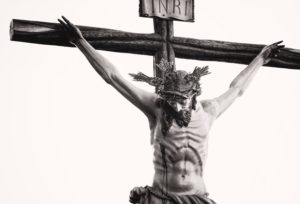 We have stood at the cross with Mary his mother, the other women and John the beloved disciple and gazed upon the reality of our suffering world. We have stood there with the poor and vulnerable and those at the margins without access to medical facilities and places to self-isolate. We have stood there with our health workers and those who are providing essential services risking their lives for others. We have stood there with those who have lost loved ones and whose hearts ache when they have not been able to celebrate a funeral liturgy. We have stood there with all those who have lost their jobs and wonder how they will feed their families. We have stood there with all those who are in isolation and not able to meet with their loved ones. And we have placed all these realities into the hands of our Abba God as Jesus did on the Cross.
We have stood at the cross with Mary his mother, the other women and John the beloved disciple and gazed upon the reality of our suffering world. We have stood there with the poor and vulnerable and those at the margins without access to medical facilities and places to self-isolate. We have stood there with our health workers and those who are providing essential services risking their lives for others. We have stood there with those who have lost loved ones and whose hearts ache when they have not been able to celebrate a funeral liturgy. We have stood there with all those who have lost their jobs and wonder how they will feed their families. We have stood there with all those who are in isolation and not able to meet with their loved ones. And we have placed all these realities into the hands of our Abba God as Jesus did on the Cross.
On Holy Saturday we have waited alone in the tomb of our homes trusting that through the darkness of these times we will find new meaning and purpose for the way we live. We have gone to the place of darkness and emptiness with our fears and disappointments and searched our hearts for purpose and in this place, we have discovered a sacred thread connecting us to one another. We have been humbled by the power of this coronavirus COVDI-19 and we have come to know the great Easter gift of hope.
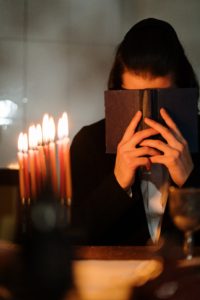 On this Easter we recall that we are an Easter people. Like the women and men joining in a chorus of hope and singing while in the confines of their homes and in lock down we too rise on this Easter knowing that the light of Christ dispels the darkness of our hearts and minds. The Easter Candle has been lit calling us once again to be that Easter light for one another and for those who have no-one to light the candle of Easter joy in their lives.
On this Easter we recall that we are an Easter people. Like the women and men joining in a chorus of hope and singing while in the confines of their homes and in lock down we too rise on this Easter knowing that the light of Christ dispels the darkness of our hearts and minds. The Easter Candle has been lit calling us once again to be that Easter light for one another and for those who have no-one to light the candle of Easter joy in their lives.
In the words of Mary MacKillop, “be calm and full of hope” (1871) as you find new and creative ways to be with one another on this Easter day.
Sr Monica Cavanagh
Congregational Leader
Photo of the Crucifix by Alem Sánchez obtained from Pexels. Used with permission.
Photo person holding a book by cottonbro obtained from Pexels. Used with permission.
